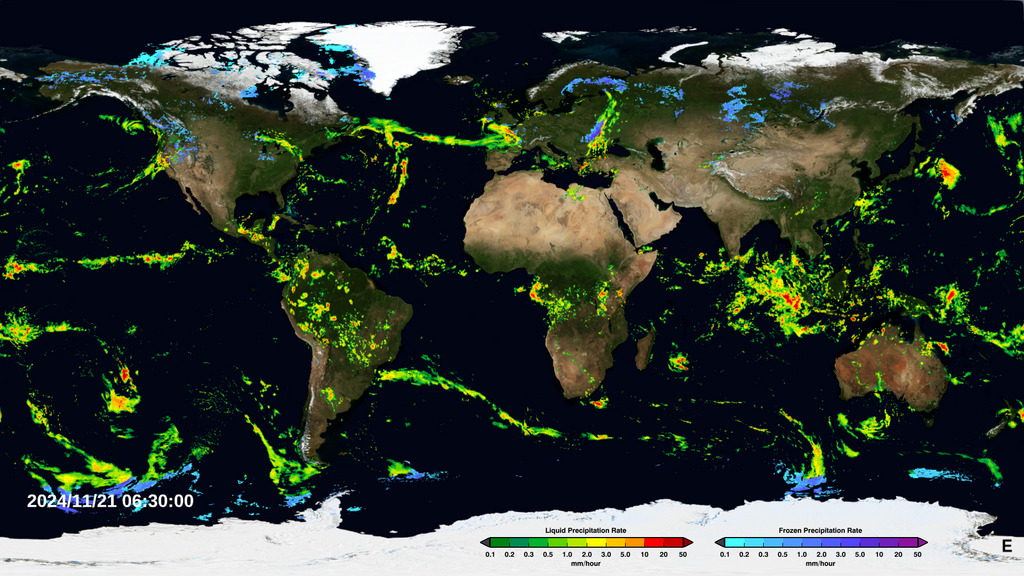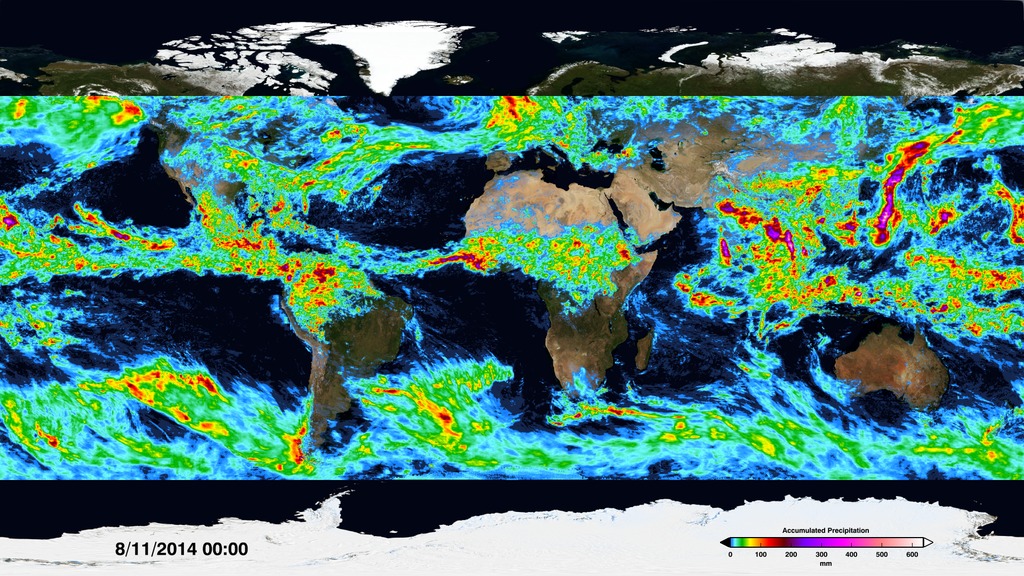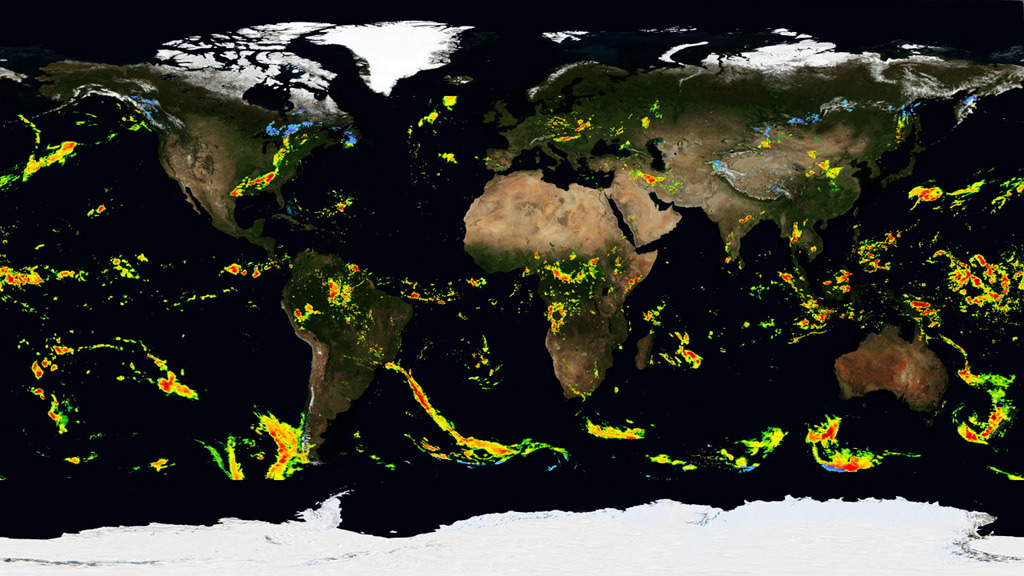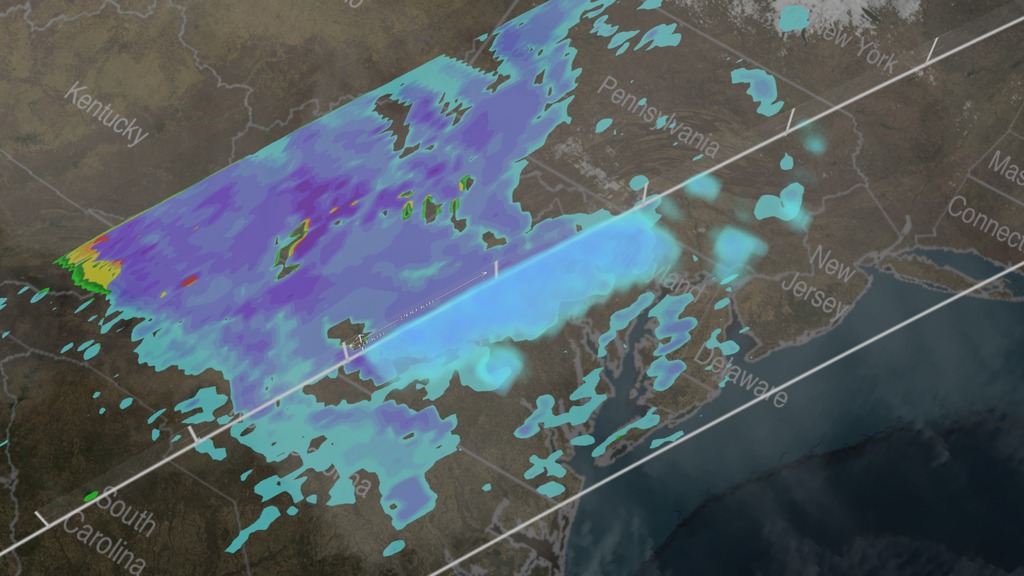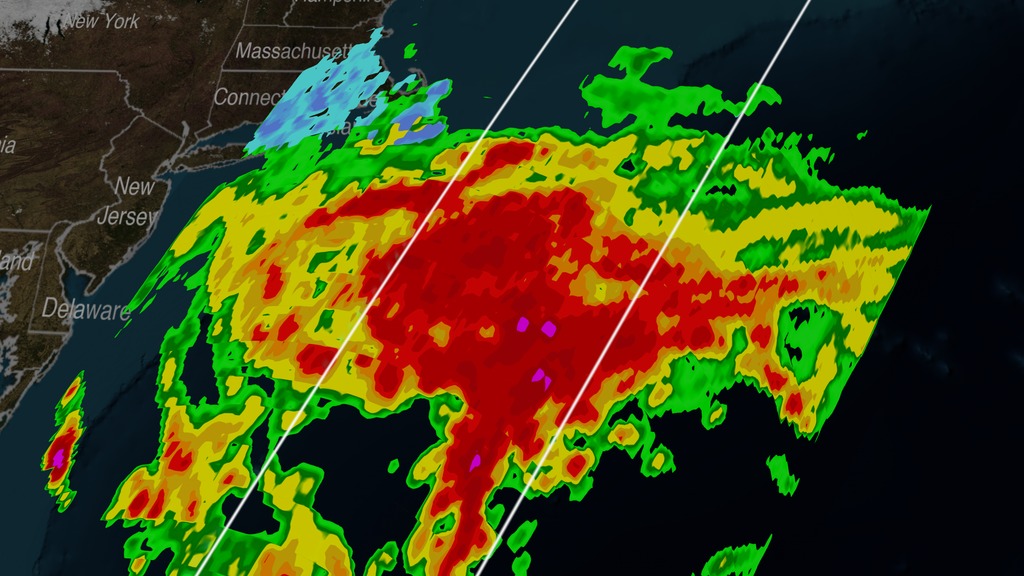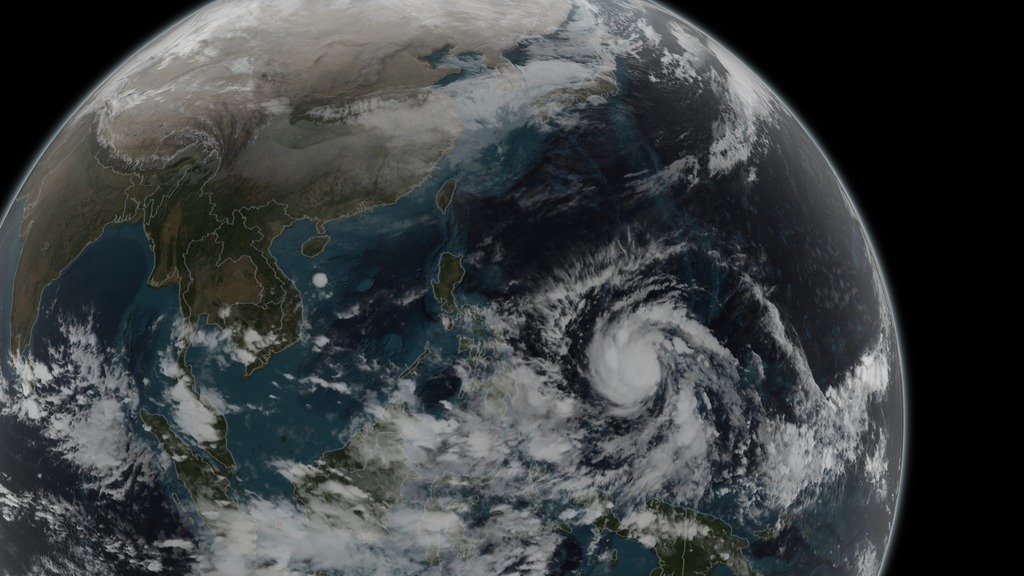GPM April Showers Bring May Flowers Live Shots 4.1.15
April Showers Bring May Flowers.
NASA scientists talk about the new global portrait of rain and snow and why this world-wide view of precipitation is important for everything from knowing how much freshwater is available to drink, to forecasting natural disasters like hurricanes and floods, to understanding Earth in a changing climate.
NASA’s Global Precipitation Measurement mission – GPM – sees through clouds to produce the most detailed world-wide view of rain, light rain and snow every 30 minutes. Scientists can now see weather fronts in the Southern Ocean, snow at the tops of hurricanes and watch a storm on the East Coast travel across the Atlantic bringing deluge of rain that causes flooding in England.
A constellation of a dozen satellites provides this unprecidented look inside rain clouds, hurricanes and blizzards, giving scientists new insights into how these storms develop and intensify, which will improve weather forecasting.
For "A week in the life of rain" click here.
Dr. Eric Brown de Colstoun - NASA Scientist
This interview is in Spanish. There is no transcript.
Dr. George Huffman
Credits
Please give credit for this item to:
NASA's Goddard Space Flight Center
-
Producers
- Michelle Handleman (USRA)
- Claire Saravia (NASA/GSFC)
- Rani Gran (NASA/GSFC)
-
Editor
- Michael Randazzo (Advocates in Manpower Management, Inc.)
-
Visualizer
- Alex Kekesi (Global Science and Technology, Inc.)
-
Project scientists
- Dalia B Kirschbaum (NASA/GSFC)
- Gail Skofronick Jackson (NASA/GSFC)
- George Huffman (NASA/GSFC)
-
Project support
- Ryan Fitzgibbons (USRA)
- Matthew R. Radcliff (USRA)
-
Scientist
- Eric C. Brown De Colstoun (NASA/GSFC)
Release date
This page was originally published on Tuesday, March 31, 2015.
This page was last updated on Wednesday, May 3, 2023 at 1:49 PM EDT.


